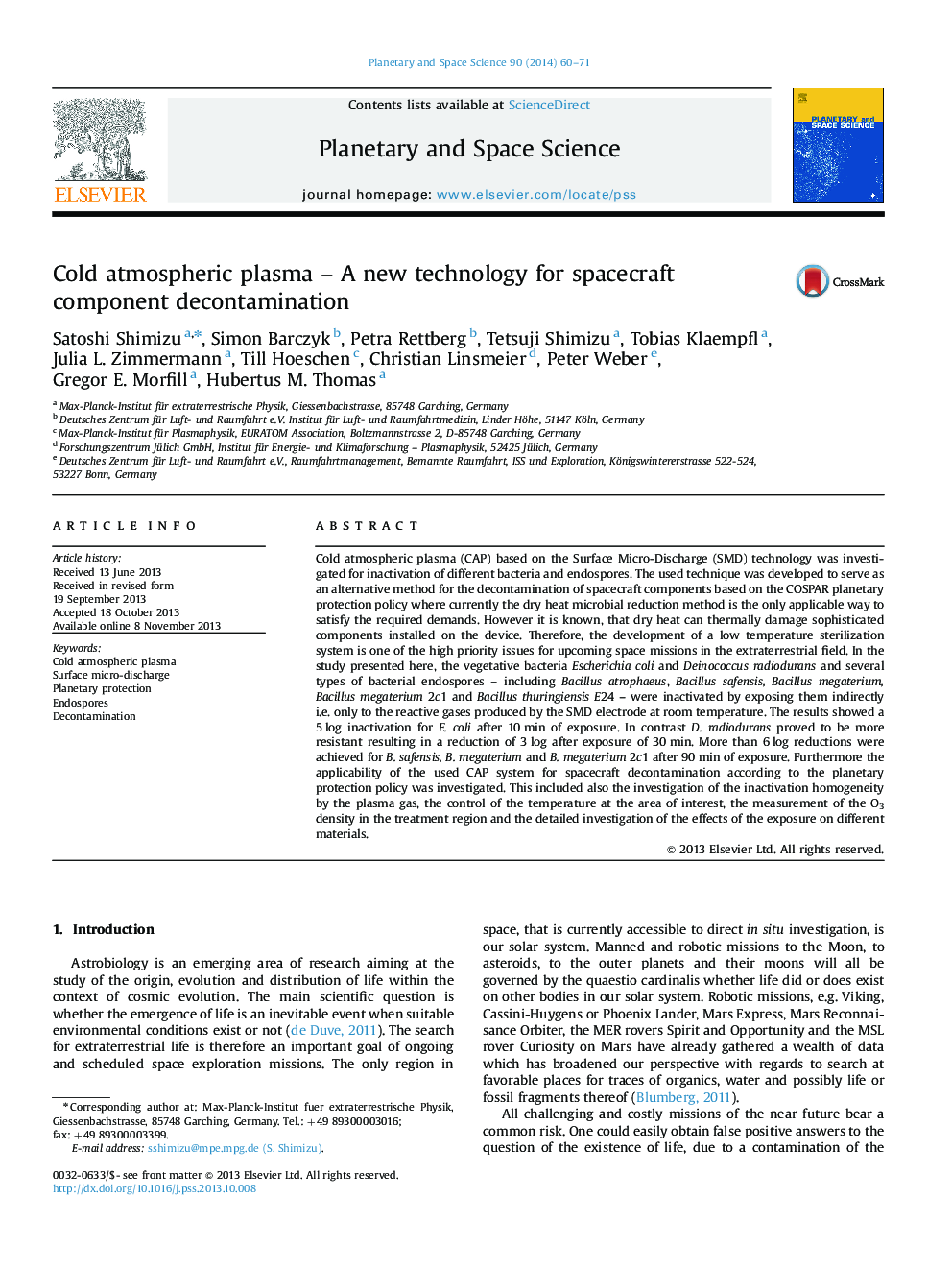| Article ID | Journal | Published Year | Pages | File Type |
|---|---|---|---|---|
| 1781180 | Planetary and Space Science | 2014 | 12 Pages |
•Surface Micro-Discharge plasma was investigated for inactivation of endospores.•The goal is to apply it for decontamination of spacecraft components.•5–6 log reductions were observed on several types of spores after 90 min treatment.•Large area can be treated by transported chemical species almost at RT.•The technique can be a potential alternative for a current dry heat method.
Cold atmospheric plasma (CAP) based on the Surface Micro-Discharge (SMD) technology was investigated for inactivation of different bacteria and endospores. The used technique was developed to serve as an alternative method for the decontamination of spacecraft components based on the COSPAR planetary protection policy where currently the dry heat microbial reduction method is the only applicable way to satisfy the required demands. However it is known, that dry heat can thermally damage sophisticated components installed on the device. Therefore, the development of a low temperature sterilization system is one of the high priority issues for upcoming space missions in the extraterrestrial field. In the study presented here, the vegetative bacteria Escherichia coli and Deinococcus radiodurans and several types of bacterial endospores – including Bacillus atrophaeus, Bacillus safensis, Bacillus megaterium, Bacillus megaterium 2c1 and Bacillus thuringiensis E24 – were inactivated by exposing them indirectly i.e. only to the reactive gases produced by the SMD electrode at room temperature. The results showed a 5 log inactivation for E. coli after 10 min of exposure. In contrast D. radiodurans proved to be more resistant resulting in a reduction of 3 log after exposure of 30 min. More than 6 log reductions were achieved for B. safensis, B. megaterium and B. megaterium 2c1 after 90 min of exposure. Furthermore the applicability of the used CAP system for spacecraft decontamination according to the planetary protection policy was investigated. This included also the investigation of the inactivation homogeneity by the plasma gas, the control of the temperature at the area of interest, the measurement of the O3 density in the treatment region and the detailed investigation of the effects of the exposure on different materials.
